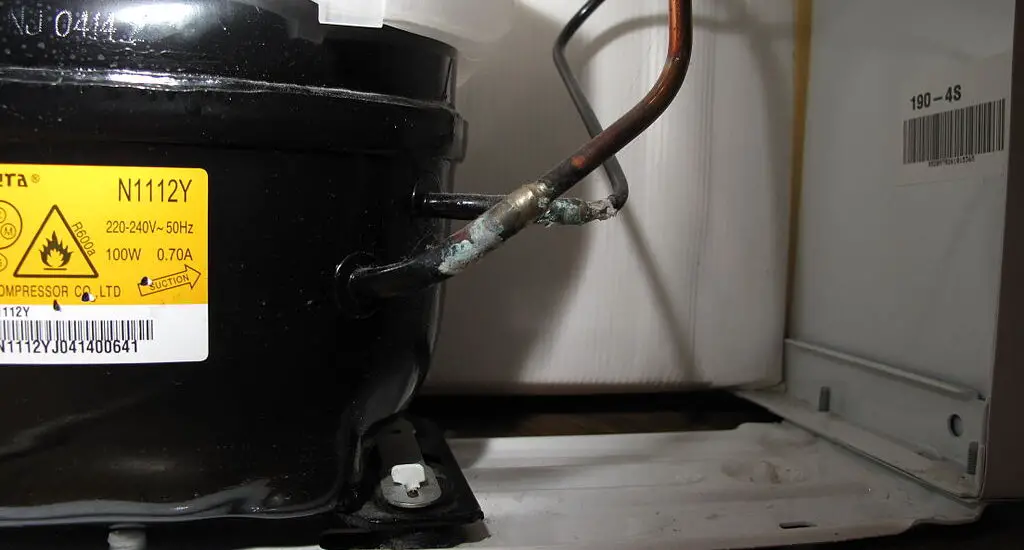What is the function of compressor in refrigeration system? If you’re asking that question, this article has all the answers. As a quick summary, it regulates pressure, moves refrigerant around, and essentially makes the whole system tick. Now, we’ll dive deeper into the specifics, exploring how it works, the types of compressors, and how they’re maintained. Stick around; it’s about to get chilly!

Table of Contents
Understanding the Refrigeration System
So, you’ve got your fridge at home, right? But have you ever peeked behind the scenes of its cool charm? The heart of the operation is the refrigeration system, a complex ballet of components, each with its part to play. Let’s meet the star of the show, our dear friend, the compressor.
Role of the Compressor
So, what’s the function of compressor in refrigeration systems? Well, it has two main jobs. Pressure regulation and refrigerant circulation. In simple terms, it’s the muscular pump of the system, controlling the flow and pressure of the refrigerant.
Pressure Regulation
Imagine the compressor as a tough bouncer at a club, deciding who gets in and who doesn’t. It regulates the pressure inside the refrigeration system, ensuring everything stays in balance. Kinda cool, right?
Circulation of Refrigerant
The second part of its job? Circulation. It pumps the refrigerant around the system like a heart pumps blood around our bodies. This ensures the refrigerant reaches every part of the system, keeping everything cool and functioning smoothly.
How a Compressor Works in a Refrigeration System
Now that you know the function of compressor in refrigeration systems, are you ready to uncover the mystery of how a compressor works? It’s like an epic saga with three thrilling acts – the intake, compression, and discharge stages.
Intake Stage
Act one: intake. It’s here that the compressor sucks in low-pressure gas from the evaporator. It’s a bit like slurping up the last bit of your favorite smoothie through a straw!
The Role of Low-Pressure Gas
So, why low-pressure gas? Well, this is where the magic happens. The low-pressure gas is like the raw material that the compressor uses to do its thing. It pulls it in, ready for the next stage of the process.
Compression Stage
Then comes the second act, the compression stage. Picture the compressor giving a big squeeze to the gas, ramping up its pressure. It’s like a weightlifter flexing their muscles, right?
Conversion of Low-Pressure Gas to High-Pressure Gas
Here, the transformation takes place. The compressor acts like a wizard, turning low-pressure gas into high-pressure gas. Amazing, right? It’s a vital part of how your fridge keeps your food fresh!
Discharge Stage
Finally, we reach the grand finale, the discharge stage. The compressor releases the high-pressure gas into the condenser. It’s like releasing a balloon and watching it zoom around the room.
Movement of High-Pressure Gas to the Condenser
The high-pressure gas moves from the compressor to the condenser, like a relay race passing the baton. In the condenser, the gas cools down and gets ready to start the cycle all over again.
Check out these other related articles…
Fridge Freezer Compressor Not Starting: 4 Proven Solutions
Water in Fridge Compressor: 3 Telltale Signs & Solutions
How to Wire a Fridge Compressor: In 4 Easy Steps
How to Find Low Side of Refrigerator Compressor: Quick Guide
Are Refrigerator Compressors Interchangeable? [Answered]
Reciprocating Compressor in Refrigeration System: Quick 411
Which Compressor is Best for Refrigerator? [Detailed Answer]
Types of Compressors Used in Refrigeration Systems
Did you know there’s more than one type of compressor? Yes, and that’s why the function of compressor in refrigeration systems might vary slightly in operation from system to system. Let’s meet the lineup: reciprocating, screw, and centrifugal compressors. They all have their quirks and characteristics, but all play the same crucial role.
Reciprocating Compressors
First up, we have reciprocating compressors. They’re the old-school workhorses of the refrigeration world. A bit like the vintage cars of the compressor world – reliable, sturdy, and built to last.
Screw Compressors
Next, we have screw compressors. As you might guess from the name, these compressors work by rotating a pair of meshed screws. Kind of like how you’d twist a corkscrew into a wine bottle.
Centrifugal Compressors
Finally, there’s the centrifugal compressor. Picture a merry-go-round at a fair. This type spins around rapidly, using centrifugal force to compress the refrigerant.
Maintenance and Efficiency of Compressors
The function of compressor in refrigeration systems depends on how well the compressor is maintained.Regular maintenance ensures efficiency and longevity. Let’s take a look at how this works.
Compressor Efficiency
When a compressor is efficient, it’s a boon for the whole refrigeration system. It’s kind of like having a superstar player on your football team. Everything runs more smoothly, and performance is top-notch.
Energy Efficiency and Cost Savings
Efficient compressors don’t just improve performance – they can also lead to significant energy savings. Imagine how you’d feel if you opened your energy bill and saw it was lower than expected. Pretty great, right?
Routine Maintenance
So, how do you keep a compressor running smoothly? Well, routine maintenance is key. Think of it like taking your car in for a service – it helps prevent problems before they start.
Common Maintenance Practices
What does maintenance look like? Well, it’s a mix of regular check-ups and preventative measures, much like going for a regular check-up at the doctor’s. In essence, common maintenance practices involve regular inspections, cleaning, lubrication, and occasional parts replacement. It’s all about keeping things in tip-top shape.
